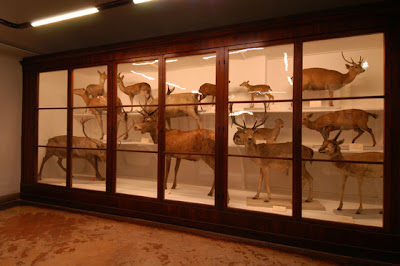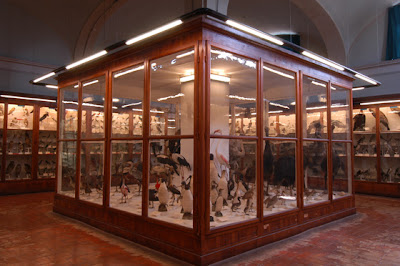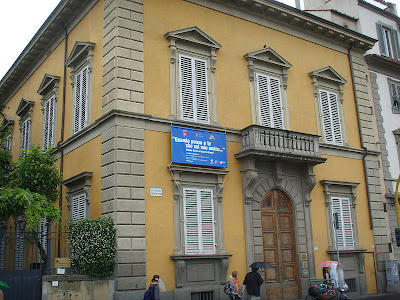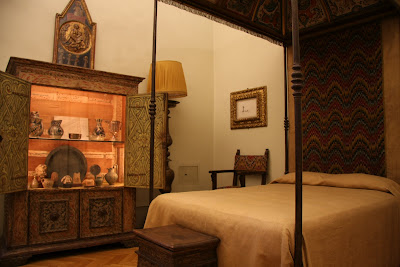Sala (Room) 2 (left) and 3 (right)

Sala (Room) 4 (left) and 5 (right)

The Zoologia ‘La Specola’ museum is part of the University of Florence. (The buzz of flourescent lights, the eerie stillness, that certain academic smell, yep, we're in a University building.) It costs 4 Euros per person to get in. We only had an hour and we made in through rooms 1-15 only. There are 33 rooms total so I guess we get to go back. The image above is from room 8, carnivores and large herbivores. There was next to no signage in English so bring a dictionary or just be content to look. Luckily most of the common animals will be familiar. We both liked this museum because there is a lot to see. Here is an interactive floor plan were you can click to see what is in each room.
There is a part of the museum dedicated to anatomical waxes (rooms 25 – 32) that is supposed to be fantastic (if you are into that sort of thing). We never saw it, so again, a trip back.
The ticket lady and the person responsible for closing the museum was clearly irritated with us slow pokes. We were in room 12 (cervi e lama) and she came through and barked at us that there was just 15 minutes left. Then in room 15 (monkeys) she shut the lights off on us for a moment – pitch black and all the little eyes came alive in the display cases - then she turned the lights back on and glanced down the hall at us. Okay, okay we’re moving. Jeez. (All images courtesy of the museum web site.)


Sala (Room) 10 (left) and 12 (right)


Sala (Room) 13 (left) and 14 (right)



Sala (Room) 17 (left) and 19 (right)

Sala (Room) 20 (left) and 21 (right)





























